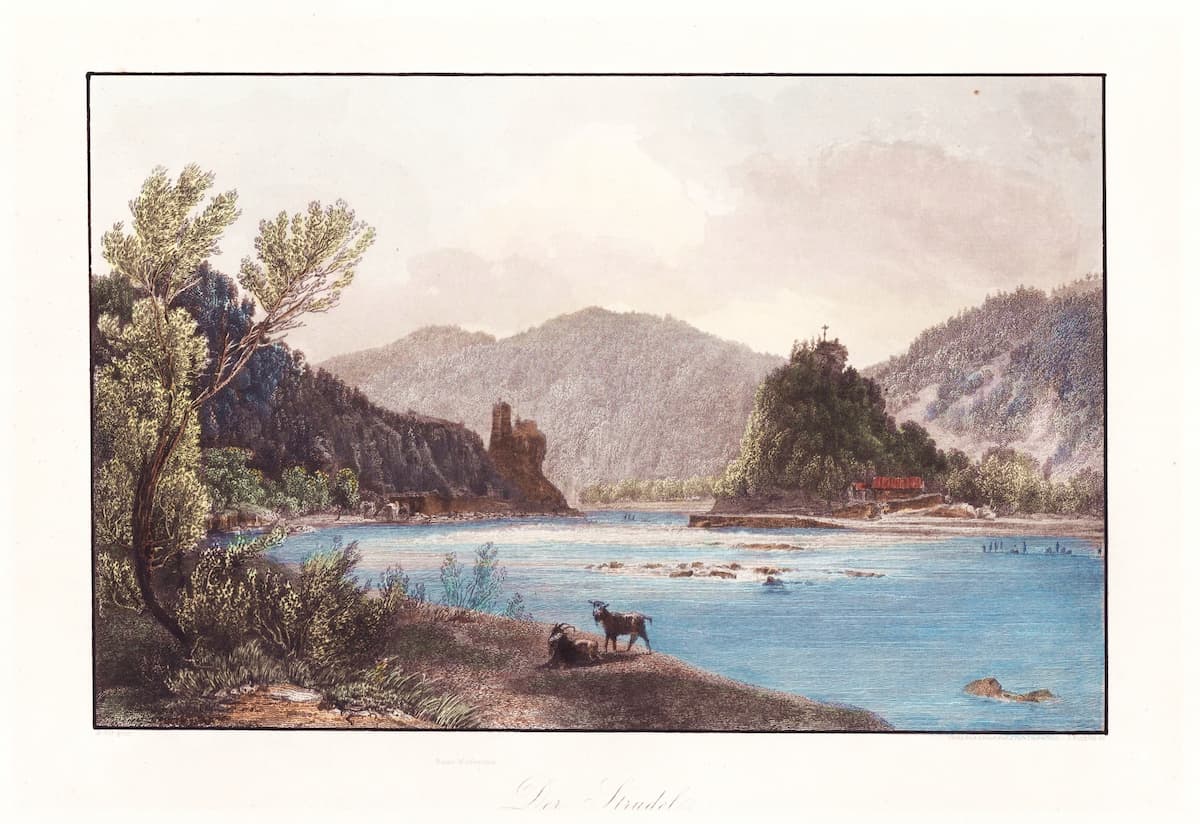Johann Strauss II’s evergreen An der schönen, blauen Donau (The Beautiful Blue Danube), Op. 314, wasn’t, of course, the only piece of music about the Danube.
Franz Schubert, in his 1817 setting of Johann Meyrhofer’s pessimistic poem Auf der Danau, created a musical work that perfectly illustrates not only the poem but also the poet’s thoughts. Although the poem starts with imagery of boats gliding on the waves, castles soaring above, and the shiver of pine forests, Mayrhofer ends the first stanza with ‘Und das Herz im Busen | Wird uns weich’ (And our hearts grow | faint within us). The works of man perish and we, in our small boat, grow afraid…
Schubert starts with a tranquil barcarolle that deepens in darkness with each new stanza. At the end, only the word ‘Untergang’ (Destruction) remains. Mayrhofer said he often came to understand his own poems better through Schubert’s interpretation and setting of them.
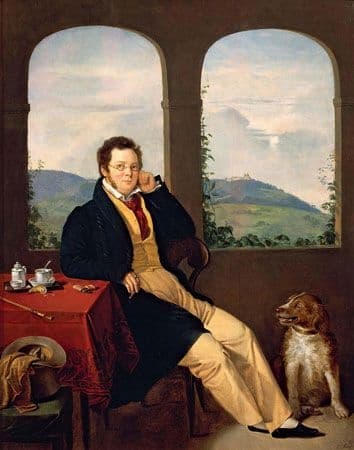
Gábor Melegh: Franz Schubert, 1827 (Budapest Hungarian National Gallery)
Franz Schubert: Auf der Donau, Op. 21, No. 1, D. 553 (Ian Bostridge, tenor; Julius Drake, piano)
Pyotr Ilyich Tchaikovsky made the Danube the subject of one of his arrangements of 50 Russian folksongs, first published in 1868. No. 5, Don’t Overflow My Peaceful Danube, was originally written for 2 pianos and later transcribed for a single piano.
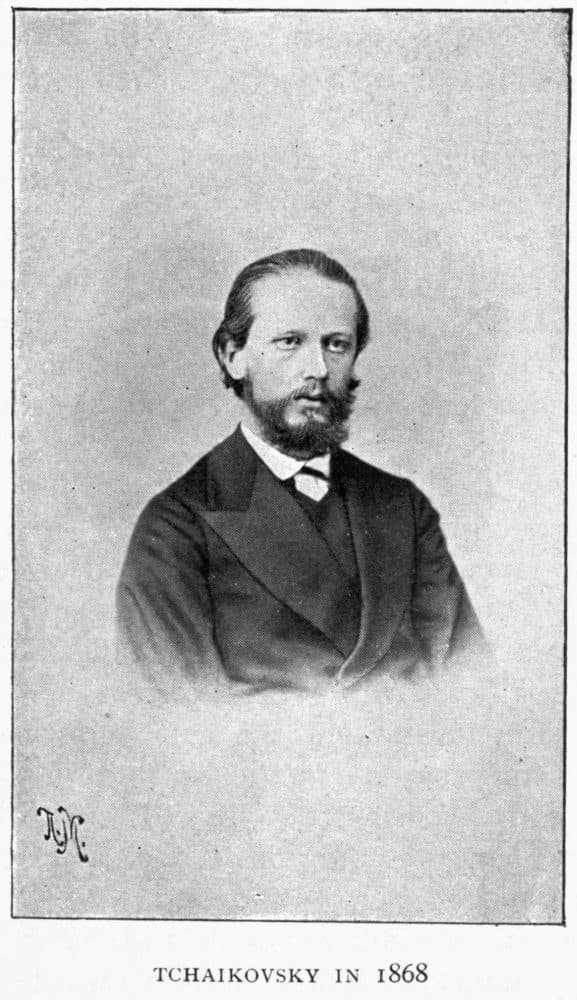
Tchaikovsky in 1868
Pyotr Ilyich Tchaikovsky: 50 Russian Folksongs – No. 5. Don’t Overflow My Peaceful Danube (Duo Crommelynck)
Pyotr Ilyich Tchaikovsky: 50 Russian Folksongs: No. 5. Don’t Overflow My Peaceful Danube (Valentina Lisitsa, piano)
Ján Levoslav Bella (1843–1936) took the Slovak folksong In Pressburg by the Danube and created a set of variations on it in 1866. Pressburg, now known as Bratislava, was, in the 18th century, the most important town in the Kingdom of Hungary – Mozart and Haydn performed there, and Beethoven made a visit. With the rise of Vienna, Pressburg’s glory faded, and most of its official offices moved to Buda, soon to be Budapest.
In Bella’s setting, he starts with a simple declaration of the song and then does variations on it, first by changing the rhythm, then creating a second variation starting with moving to a lower register, creating a pastoral setting, followed by a con brio setting and an energetic conclusion. The final variation casts the song as a mazurka and has a syncopated ending.
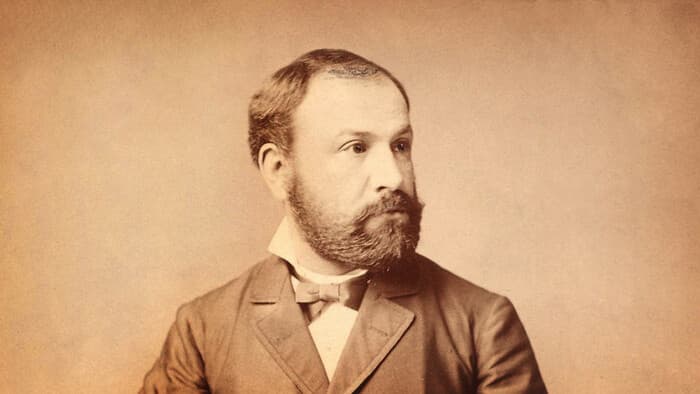
Ján Levoslav Bella
Ján Levoslav Bella: Variations on ‘In Pressburg by the Danube’, Op. 9 (Daniela Ruso, piano)
Mikuláš Schneider-Trnavsk (1881–1958) also set the song but as a piece for soprano and piano.
Mikuláš Schneider-Trnavský: Pri Prešporku na Dunaji (At Prešpork on the Danube) (Ingrida Gápová, soprano; Bartlomiej Wezner, piano)
Romanian composer and conductor Iosif Ivanoci composed his waltz Waves of the Danube in 1880, and it remains popular today. It’s a Viennese waltz but with distinctive Slavic characterisations.
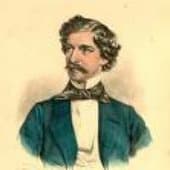
Iosif Ivanoci
Iosif Ivanovici: The Danube Waves (Enescu Festival Orchestra; Ion Petrescu, cond.)
Like Stauss’ Danube, Ivanovici’s work appears in many different versions, such as this one for the mechanical instrument known as the Polyphon.
Iosif Ivanovici: Buffet Polyphon avec Glockenspiel: Les flots du Danube (Mechanical instrument)
Or this one for mandolin orchestra.
Iosif Ivanovici: Dunajskie volny (Waves of the Danube) (arr. for mandolin orchestra) (Mandolines Orchestra; Wessel Dekker, cond.)
American singer Al Jolson set words to Ivanovici’s melody to create a song played at many anniversary parties. The Anniversary Song, better known by its first line, ‘Oh, How We Danced on the Night that We Wed’, was written for the 1946 bio-pic about Jolson’s career, The Jolson Story. The song was written for the movie and was never part of Jolson’s early repertoire – he first recorded it in 1947, after the movie came out.
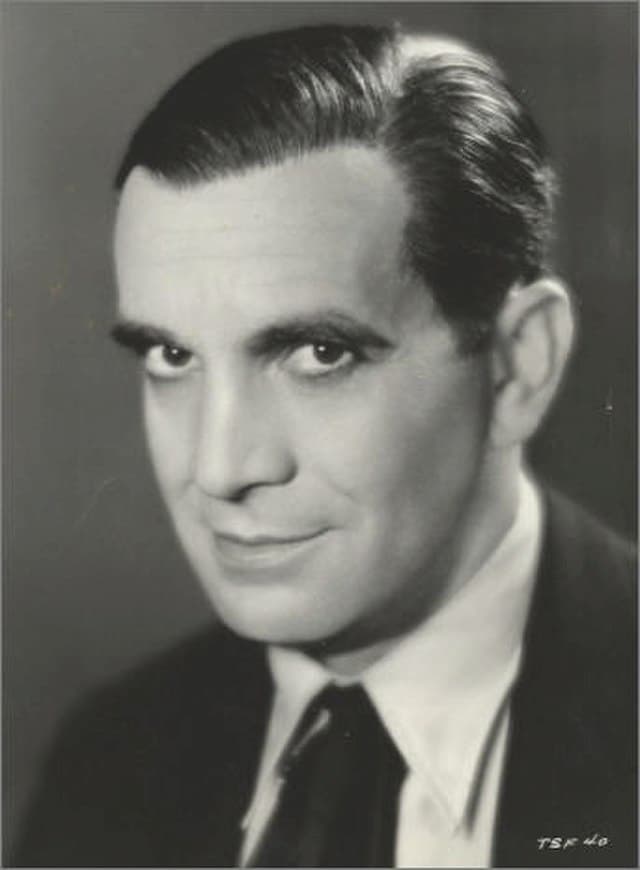
Al Jolson, 1916
Al Jolson: The Anniversary Song (Remastered)
One surprising contribution is by the March King, John Philip Sousa. His 1877 piece for the band is about the Danube when it was the military border separating the Ottoman Empire from Russia and Turkey. He’s managed to put something of the exotic orient in his otherwise very American marches.
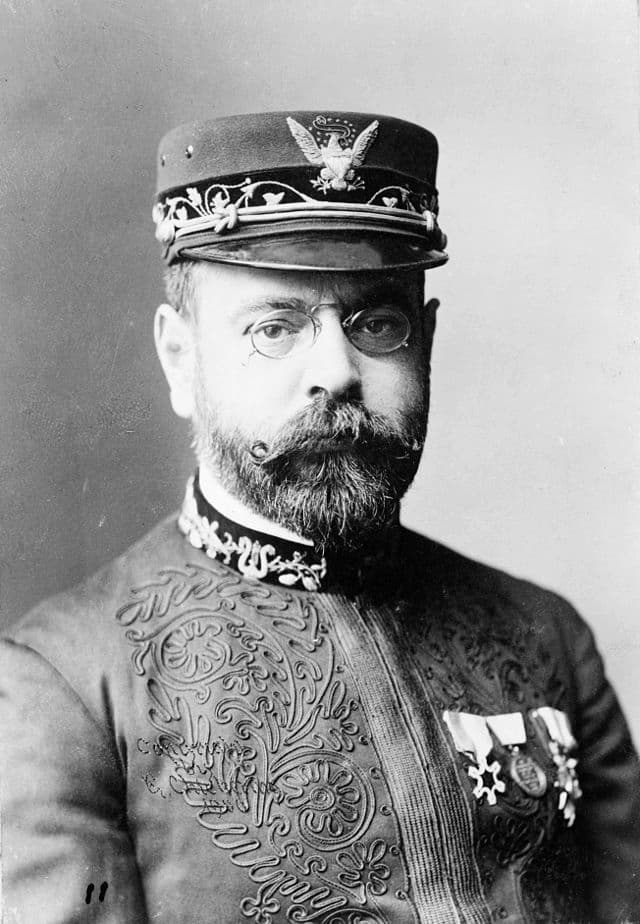
Elmer Chickering: John Philip Sousa, 1900
John Philip Sousa: Across the Danube, Op. 36 (arr. K. Brion for wind band) (Marine Band of the Royal Netherlands Navy; Keith Brion, cond.)
Alexander Moyzes (1906–1984) wrote his symphonic suite Down the River Váh, op. 26, in the 1930s. It started as a commission for incidental music for a radio program about a new power station on the Váh River in 1935. In 1945, Moyzes grew the work into a five-movement symphonic suite and changed its orchestration from its small original for Bratislav Radio to a full symphonic spread. In following the Váh, he also followed Smetana’s model of Vltava (The Moldau), starting at the Váh’s source and concluding with the river meeting the Danube. In the composer’s commentary about the movement, he says
The Váh, the mother of all Slovak rivers, encounters the fertile plains while on its journey. She’s singing her melody with a delightful rhythm. She is dancing here and there. Reeling waves dance on the water line, dazzled by a beam of summer sun. The river flow gets bigger and bigger and can be heard more and more. But still, the meadow song and dance can be heard through the noise. We can hear the opening song. Other rapids are coming; the Váh is growing. Just before waving farewell to their birthplace, once again, the brave people resound in singing. They are free people under the Tatra Mountains.
In his collection of music for children, Hungarian composer Béla Bartók uses a Slovak folksong for his Danube piece.
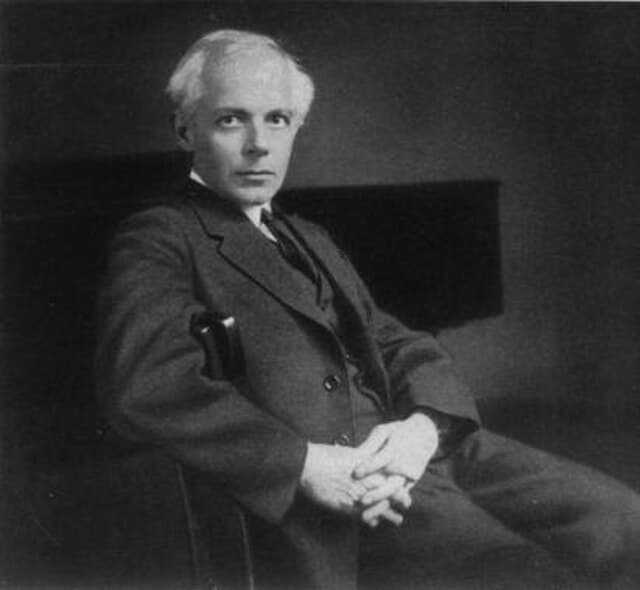
Béla Bartók, 1927
Béla Bartók: For Children, BB 53, Vol. 4 (based on Slovakian folk tunes) (excerpts): No. 79. The Danube’s Bank Is Green at Bratislava (Sylvia Parker, piano)
Bartók’s friend Zoltán Kodály also set a Danube song.
Zoltán Kodály: Bicinia hungarica, Book 1 – No. 11. Hej! Dunarol fuj a szel (The wind is blowing from the Danube) (Budapest Zoltan Kodaly School Children’s Choir; Csilla Ori, cond.)
German composer Martin Scherber (1907–1974), starting in the 1930s, wrote two cycles of children’s songs, one of which is about the Danube Bridge.
Martin Scherber: Größer Kinderliedrzyklus (Main Cycle of Children’s Songs) – No. 16. Behind the Danube Bridge (Thomas Heyer, tenor; Hedayet Djeddikar, piano)
Serbian composer Isidora Žebeljan (b. 1967) created her ‘Scene for Soprano, Piano, String Quartet & Percussion’ around the idea of a small boat on the Danube. Using a text from a collection of 18th and early 19th-century Serbian urban poetry, the composer augmented her work with melodic features of Serbian folk music from Vojvodina.
The composition is based in and around the river and begins with the idea of a bell tolling, dispersed over the river surface. Within it comes a melancholic melody of a voice (with characteristics of the Vojvodina folk music), but it is heard as if coming from the water itself. In the middle, the solo piano part takes us to the river itself, with its restless and unstable flow. Here, the joyfulness of untamed rhythms comes to the fore, sounding like a pianola that is ‘out of control’ and imitating a pop song created from a nursery rhyme. The river eventually calms, and the now-distant song is heard again before fading away to the sound of the bell ringing in the river’s depths.

Isidora Žebeljan
Isidora Žebeljan: A Yawl on the Danube (Aneta Ilic, soprano; Brodsky Quartet; Miroslav Karlovic, percussion; Isidora Žebeljan, piano; Premil Petrović, cond.)
Hungarian composer Leó Weiner (1885–1960) took the epic poem by János Arany (1817–1882) to create his symphonic poem, Toldi, op. 43 (1952). Arany, often called the Shakespeare of the Ballads, based his Toldi trilogy (1846–1879) on the life of the legendary Miklós Toldi, a 14th-century Hungarian hero serving under King Louis the Great. The story of Toldi as the king’s champion was told in three books: Toldi (1846), Toldi szerelme (Toldi’s Love) (1879), and Toldi estéje (Toldi’s Night) (1848).
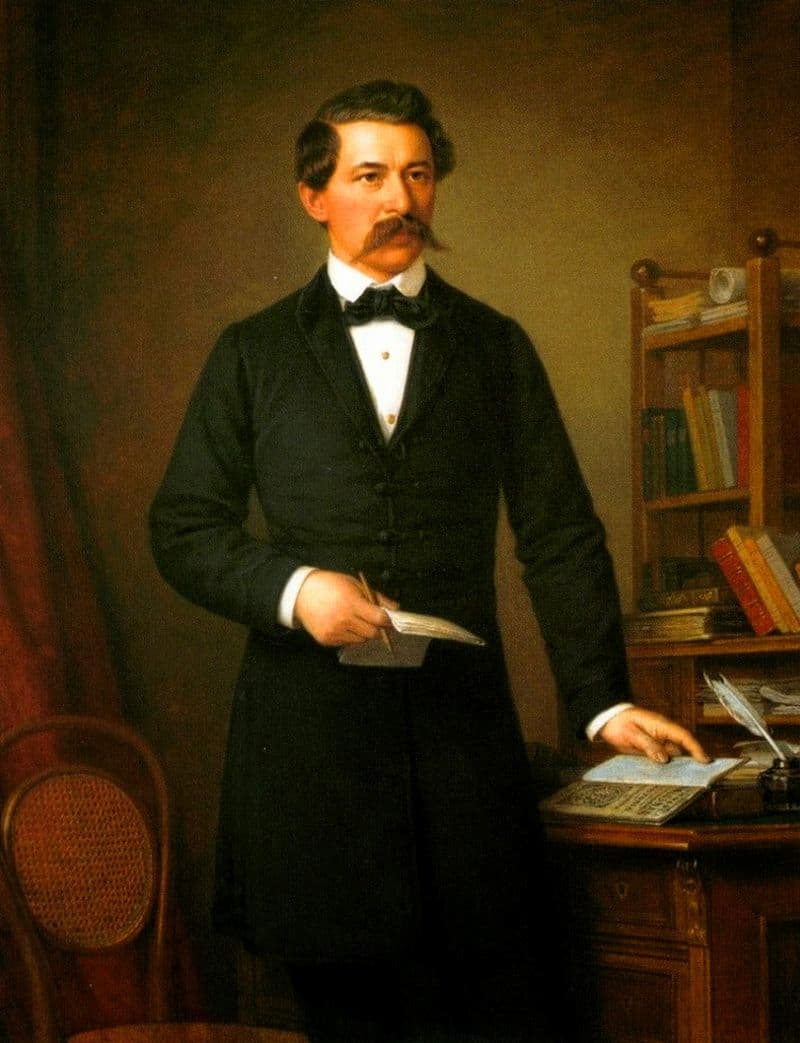
Miklós Barabás: János Arany
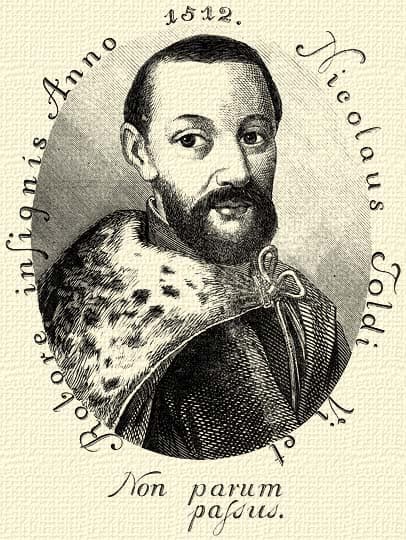
Miklós Toldi, 1512
After movements with feasts and warfare, a Czech warrior and Toldi are about to fight mid-stream on an island in the Danube. Toldi overpowers his opponent simply with his handshake, but after the Czech turns on him after being sent back to his own side, Toldi beheads the perfidious enemy and holds it up to the cheering crowd.
Leó Weiner: Toldi, Op. 43 – XI. Gyülekezik a tömeg a Duna partján (A crowd is gathering on both banks of the Danube) (Budapest Symphony Orchestra MÁV; Valéria Csányi, cond.)
The symphonic poem ends with the King sending for Toldi, and he is reunited with his mother.
For more of the best in classical music, sign up for our E-Newsletter

